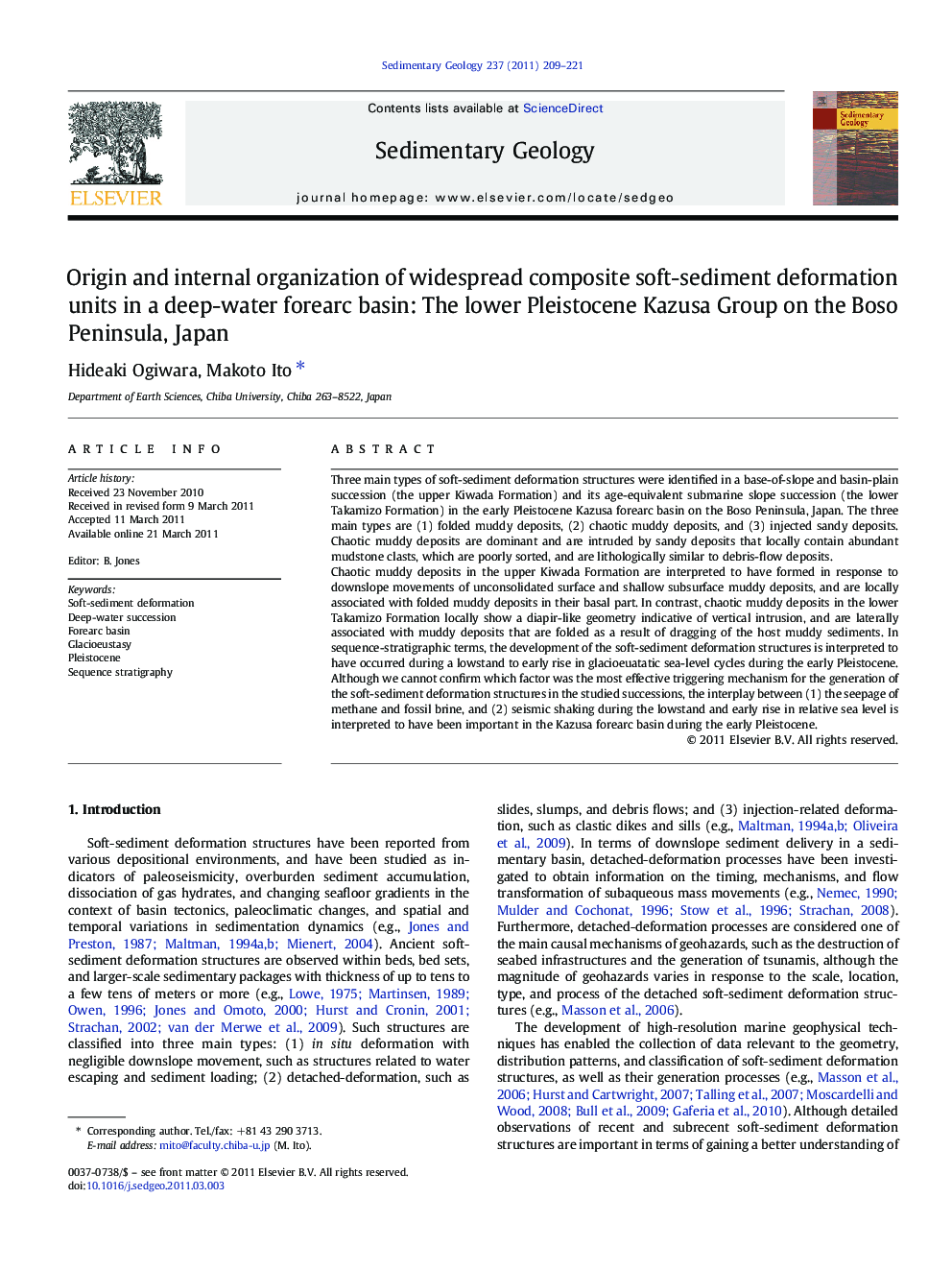| کد مقاله | کد نشریه | سال انتشار | مقاله انگلیسی | نسخه تمام متن |
|---|---|---|---|---|
| 4690051 | 1636108 | 2011 | 13 صفحه PDF | دانلود رایگان |

Three main types of soft-sediment deformation structures were identified in a base-of-slope and basin-plain succession (the upper Kiwada Formation) and its age-equivalent submarine slope succession (the lower Takamizo Formation) in the early Pleistocene Kazusa forearc basin on the Boso Peninsula, Japan. The three main types are (1) folded muddy deposits, (2) chaotic muddy deposits, and (3) injected sandy deposits. Chaotic muddy deposits are dominant and are intruded by sandy deposits that locally contain abundant mudstone clasts, which are poorly sorted, and are lithologically similar to debris-flow deposits.Chaotic muddy deposits in the upper Kiwada Formation are interpreted to have formed in response to downslope movements of unconsolidated surface and shallow subsurface muddy deposits, and are locally associated with folded muddy deposits in their basal part. In contrast, chaotic muddy deposits in the lower Takamizo Formation locally show a diapir-like geometry indicative of vertical intrusion, and are laterally associated with muddy deposits that are folded as a result of dragging of the host muddy sediments. In sequence-stratigraphic terms, the development of the soft-sediment deformation structures is interpreted to have occurred during a lowstand to early rise in glacioeuatatic sea-level cycles during the early Pleistocene. Although we cannot confirm which factor was the most effective triggering mechanism for the generation of the soft-sediment deformation structures in the studied successions, the interplay between (1) the seepage of methane and fossil brine, and (2) seismic shaking during the lowstand and early rise in relative sea level is interpreted to have been important in the Kazusa forearc basin during the early Pleistocene.
Journal: Sedimentary Geology - Volume 237, Issues 3–4, 1 June 2011, Pages 209–221